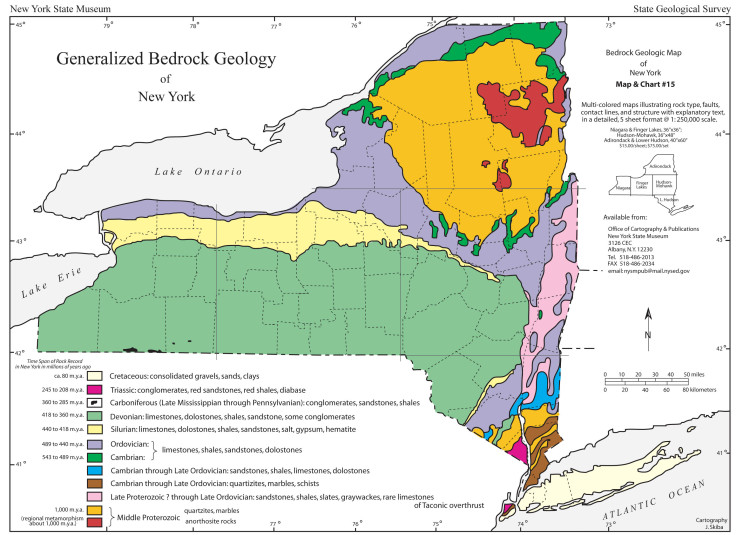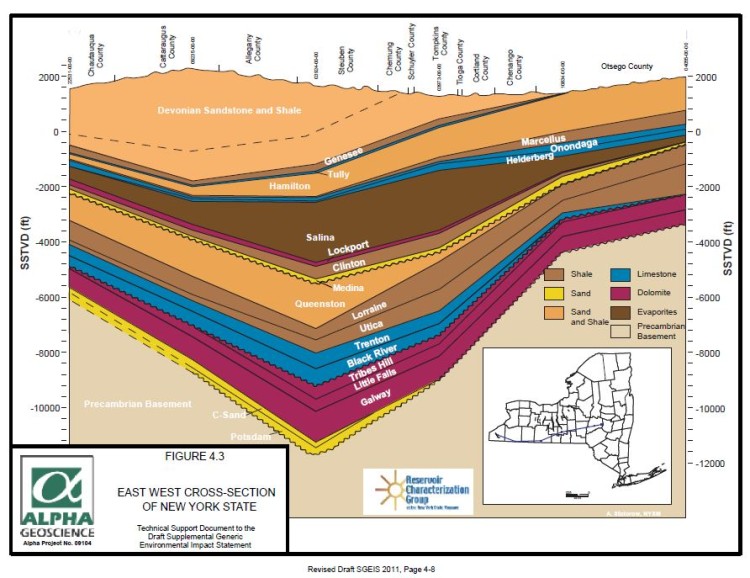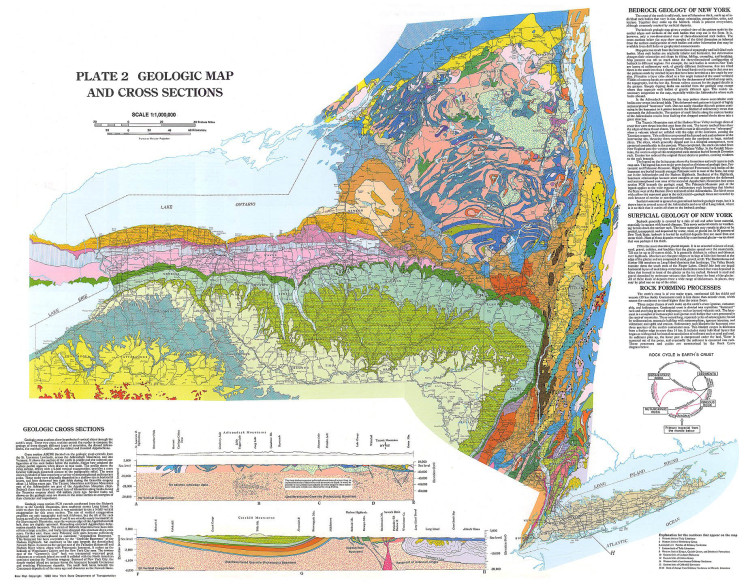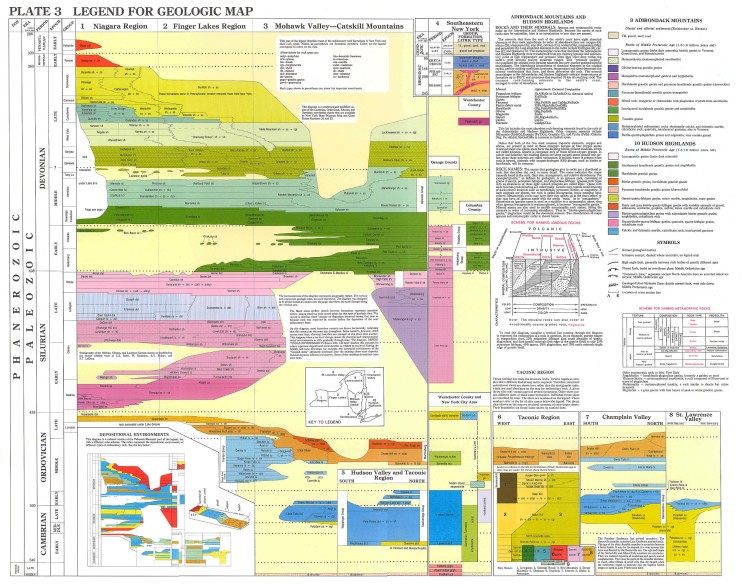Geology of the New York City Region
Hudson Highlands of New York
The Hudson Highlands region represents the outcrop belt of crystalline basement rocks of the northeastern extension of the Reading Prong (see Figure 10). The Hudson Highlands are a northern extension of the Ramapo Mountains in northern New Jersey. To the north and east, the boundary between the Hudson Highlands, the Taconic Mountains, and the Western Connecticut Uplands region is indistinct, partly because of the occurrence of numerous thrust faults and large igneous Middle Paleozoic intrusions in the region. In general, the name Hudson Highlands refers to the low mountains or high hills that border the Hudson River north of Peekskill and south of Newburgh, New York. Links to Highlands in the Hudson River region include:
- Geology of the Hudson Highlands region
- Harriman State Park
- The rocky exposures along the trails throughout Harriman State Park consist dominantly of granite and amphibolite gneiss that are cut locally by small quartz veins, and sometimes by migmatite…The primary ore in all the mines was magnetite, a black, shiny, highly magnetic iron mineral (Fe3O4). Accessory minerals include pyrite, biotite, and hornblende. The ore deposits occur as localized hornblende gabbro veins or small intrusions within the amphibolite gneiss.
- Bear Mountain State Park
- The bedrock throughout Bear Mountain State Park is the Storm King Granite (Late Proterozoic), a fairly uniform granite gneiss cut with occasional quartz-filled veins, migmitite, and pegmatite dikes. In the valleys and hillsides to the north and south of Bear Mountain are a number of iron mines which extracted magnetite ore from hornblendite gabbro veins…. The resistant character of the Storm King Granite is responsible for Bear Mountain’s slightly higher elevation. The mountaintop also provides a spectacular view of the Hudson River “fjord.”…The parking and picnic areas on top of Bear Mountain are host to numerous glacial erratics, most consisting of gneiss derived from local outcrops. Many are large chunks of red puddingstone (conglomerate) derived from the Skunnemunk Conglomerate Formation (Early Devonian) which crops out in the Green Pond Outlier, a northeast-trending syncline of Middle Paleozoic sedimentary formation in the heart of the Highlands Province. These easily recognizable boulders were carried to the top of Bear Mountain by glacial ice from outcrop areas 30 miles to the north. Cobbles of Skunnemunk Conglomerate can be found as far south as the beaches on the south shore of Long Island!
- Anthony’s Nose Overlook
- Road cuts on the opposite side of the route consist of an amphibole gneiss host rock intruded by granite migmatite dikes. Whether these intrusions are associated with the emplacement of the Storm King Granite or with those of the younger Cortlandt Igneous Complex (Devonian) to the south is unclear. The Cortlandt Igneous Complex consists of a series of granite and diorite intrusions of Late Devonian age found in an area of approximately thirty square miles in the vicinity of Peekskill (northwestern Westchester County, New York).
- Mianus River Gorge
- Harriman State Park
Highlands Locations in New Jersey
New Jersey has perhaps the most varied and accessible public lands within the Highland Province. The selection below provides some of the best know geologic wonders in the region. In addition to being host to interesting rocks and minerals, all these localities provide unique information about earth history relating to the formation of the North American continent from the Late Precambrian through the Paleozoic Era, and also provide spectacular examples of glacial features and modern landscape development. Discussion and sites in the New Jersey Highlands include:
- The New Jersey Highlands (and Ramapo Mountains)
- Just west of Pompton Lakes the land rises steeply along the eastern front of the Ramapo Mountains. This mountain front reveals a hidden structure in the region: the Ramapo Fault. This fault is the boundary between the western edge of the Newark Basin and the northern New Jersey Highland… faults and bedrock structures in the Highlands region have exceedingly complex histories that are challenging to discern.
- Pyramid Mountain Natural Historic Area
- Norvin Green State Park
- Route 23 Rest Area
- Wawayanda State Park
- Franklin/Ogdensburg Mineral Resource Area
- Geology along Interstate 80 in the New Jersey Highlands
- Jenny Jump State Park
- Geology along Interstate 78 in the New Jersey Highlands
- Round Valley State Park
- Leigh Cavern



